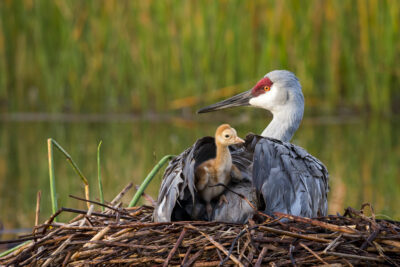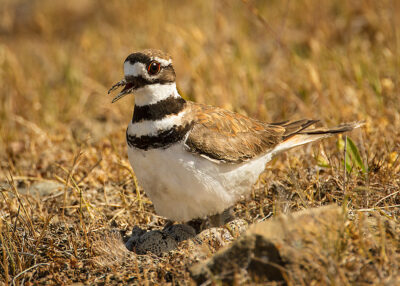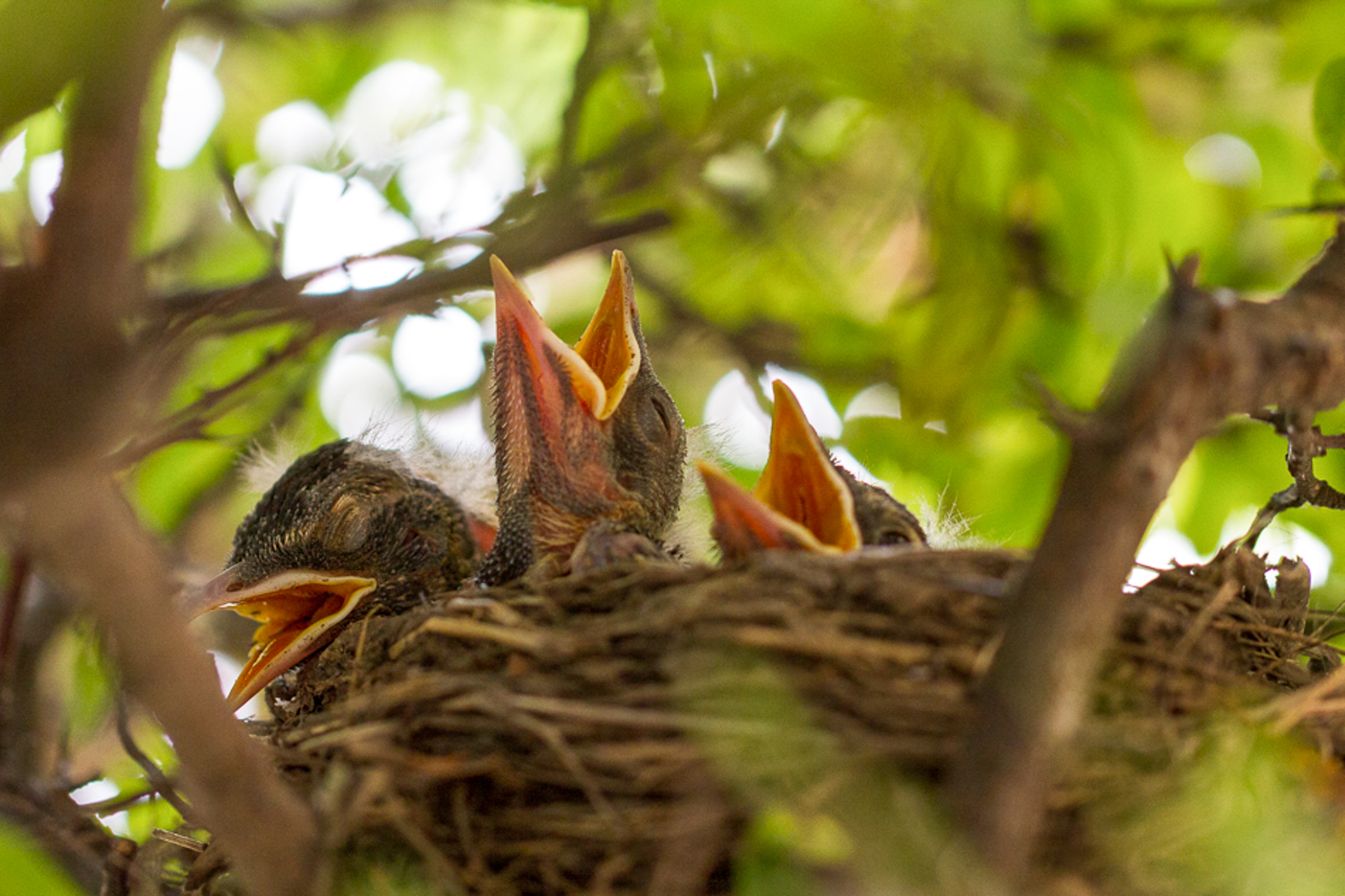June, the beginning of summer, is when most songbirds are in full swing with their breeding season in Michigan. Territorial individuals singing to defend their spatial territory and to attract or reinforce a pair bond with a mate create the wonderful phenomenon known as the dawn chorus.
Bird species use different nesting habitats, even if more than one species is using the same small area. This is called niche specialization and allows for a high degree of biodiversity (or many different species) in one area. Some birds will nest in trees or shrubs, building a nest from small twigs, grasses, or even spiderwebs. Others will weave their nest (Baltimore Orioles), and others will use cavities in trees (Black-capped Chickadees). Some birds nest on or near the ground (Field Sparrows), and some will place nests on a floating mat of vegetation (Black Terns). Some species even nest on human structures, to either the delight or frustration of the human (Eastern Phoebes and American Robins).

Sandhill Crane. Photo by Mary Lundeberg | APA
If you find a nest somewhere on your home or property — under the eaves, on top of an outdoor lighting fixture, on a deck support beam, in a flower planter, and so on — remember that it is illegal to move, damage, or destroy a nest if it contains viable eggs or young. Exceptions to this are nests of House Sparrows or European Starlings. Both are not native to North America and are highly invasive species, causing harm or displacing native bird species. Watch for and remove these two invaders from nest boxes or Purple Martin housing especially, as they will destroy eggs, nestlings, and even adults of native birds like Eastern Bluebirds and Purple Martins.
What bird species do you hope to see this month? Are you seeing fledgling birds yet? This is a great time of year to walk your local patch of habitat or watch birds in your yard. Do you observe any birds with juvenile plumage or ones that may be begging with a different call or fluttering their wings? Open your bird guide and note what differences you can see between adults and juveniles. Are their color patterns different? Is the bill color different or the same? When you observe birds outdoors, do you see juveniles with fluffy, downy feathers still present — often seen around the base of the tail — or with shorter (still growing) wing or tail feathers?
~ Linnea Rowse, Michigan Audubon conservation program coordinator
Featured photo: American Robins by Mary Berry | APA

American Kestrel. Photo by Christopher Ciccone | APA

Killdeer. Photo by Don Henderson | APA

